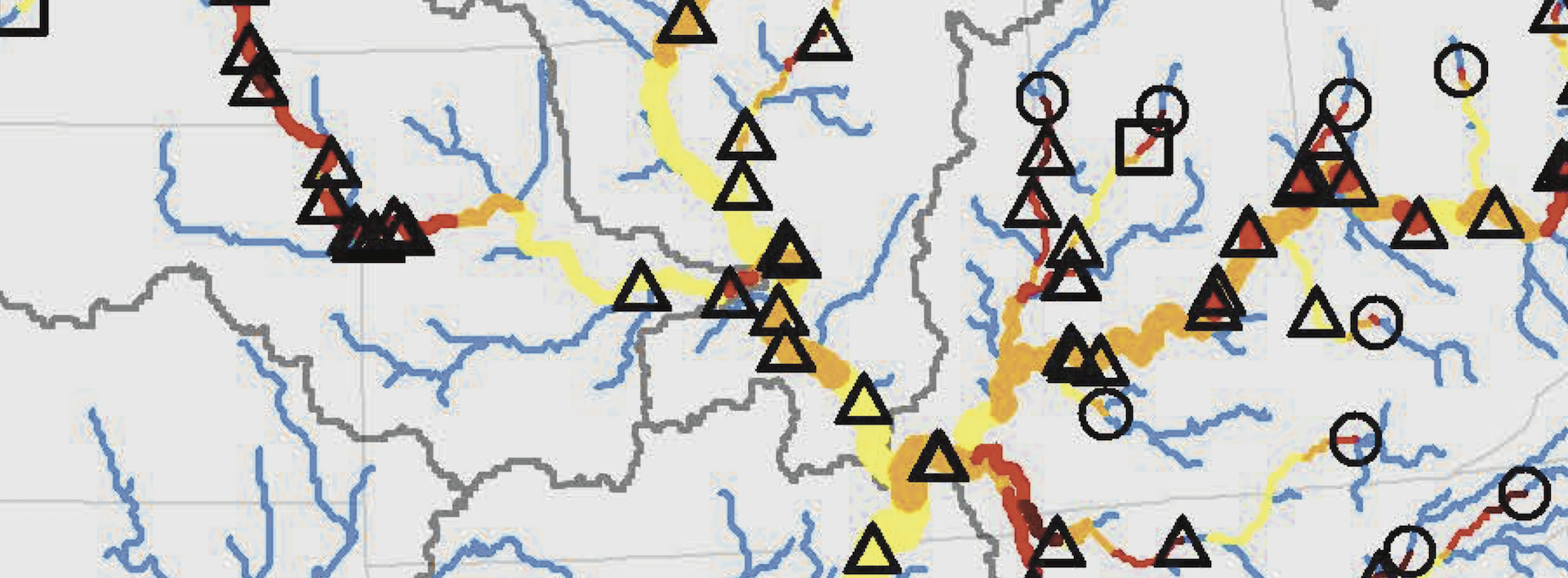Posted on March 9, 2018 in ASRC News, Environmental Sciences Initiative

Scientists from The City University of New York (CUNY), Sandia National Laboratories, and the National Renewable Energy Laboratory have published a new paper in Environmental Research Letters evaluating thermal pollution, typically addressed in terms of its impact on aquatic habitat and life, with respect to its constraints on electricity production for the first time.
The paper — “Thermal pollution impacts on rivers and power supply in the Mississippi River watershed” — is led by Environmental Sciences Initiative (ESI) researcher Ariel Miara and evaluates thermal pollution and power supply across 128 plants in the Mississippi River watershed. The paper’s results show that the transport of thermal effluents along river reaches may lead to plant-to-plant interferences, lowering power output at downstream locations. Yet, the overall impact on power supply is modest compared with natural climate-water induced constraints, which are shown to increase further under a warming climate.
Miara, also a PhD candidate at The City College of New York’s Grove School of Engineering, and co-authors — including ESI Director Charles Vörösmarty — noted that regulatory temperature limits can greatly reduce thermal pollution levels, but at the expense of a significant reduction in electricity generation capacity. However, by leveraging river network topologies with higher resolutions than previous studies, counter-intuitive results emerge showing several instances when power production capacity rises at individual plants when regulatory limits reduce upstream thermal pollution. The use of higher resolution river networks also reveals the need to assess thermal pollution in a more spatially resolved manner, capable of uncovering diverse impacts across individual plants, river reaches and sub-basins.
These findings highlight the importance of infrastructure planning and optimization strategies, together with adequate regulatory policies, in being able to not only manage today’s energy needs, but also future energy needs that will be constrained by changing climate and water availability, all while reducing environmental impairment and damage to aquatic ecosystems.
For more information on this work, please contact lead author Ariel Miara (Ariel.Miara@asrc.cuny.edu).
***
About the Advanced Science Research Center at the Graduate Center, CUNY
The Advanced Science Research Center (ASRC) at the Graduate Center of the City University of New York (CUNY) elevates scientific research and education at CUNY and beyond through initiatives in five distinctive, but increasingly interconnected, disciplines: environmental sciences, nanoscience, neuroscience, photonics, and structural biology. The ASRC promotes a collaborative, interdisciplinary research culture with researchers from each of the initiatives working side-by-side in the ASRC’s core facilities, sharing equipment that is among the most advanced available.
